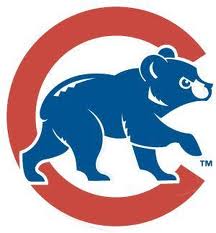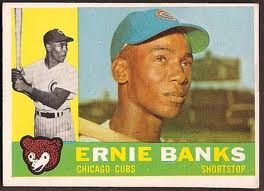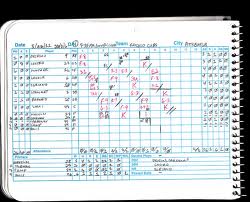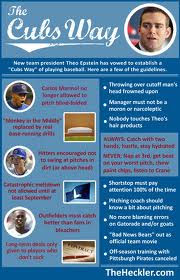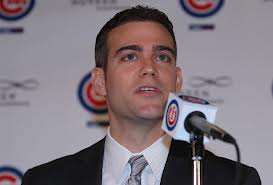 Welcome to O.D. Fridays at DonorDreams blog. Every Friday for the foreseeable future we will be looking more closely at a recent post from John Greco’s blog called “johnponders ~ about life at work, mostly” and applying his organizational development messages to the non-profit community.
Welcome to O.D. Fridays at DonorDreams blog. Every Friday for the foreseeable future we will be looking more closely at a recent post from John Greco’s blog called “johnponders ~ about life at work, mostly” and applying his organizational development messages to the non-profit community.
In a post titled “I Have Leemers,” John talks about the power of intuition and the resistance he encounters from leaders in his workplace when it comes to making decisions based on these gut feelings.
Let me start by making a confession. My Myers-Briggs personality type is ESTP, which means I am:
- Extroverted
- Sensing
- Thinking
- Perceiving
This is what personality type experts will tell you about intuition and people like me:
“ESTP’s least developed area is their intuitive side. They are impatient with theory, and see little use for it in their quest to “get things done”. An ESTP will occasionally have strong intuitions which are often way off-base, but sometimes very lucid and positive. The ESTP does not trust their instincts, and is suspicious of other people’s intuition as well.”
As a non-profit and fundraising professional, I can honestly tell you that I’ve always felt like I’m at a disadvantage because of my intuition deficit. It is for this reason I work extra hard at trying to develop the intuition side of my personality.
Impossible you say? I don’t think so. I’ve heard personality type experts compare work like this to right-handed people learning to write with their left hand. It isn’t impossible. It is hard to do and will never feel “normal,” but it is doable.
So, you might be wondering ‘WHY’ would I ever attempt to do something like this? Well, I personally think intuition is a very important attribute for successful non-profit people. Let me give you two examples.
Fundraising
As part of any good annual campaign, you schedule face-to-face meetings with donors. In those meetings you make the case for support and ask them to pledge/give a specific dollar amount. It sounds something like this:
“So, Sally . . . I am hoping that you would give some thoughtful consideration to making a contribution of $1,000 this year to support some of the programs we just talked about as well as everything else this agency does to make a difference in our community.”
That $1,000 ask amount is determined at a committee meeting as part of prospect identification-evaluation-qualification exercises during the campaign planning phase.
As an ESTP, I love prospect identification-evaluation-qualification because it feels like we’re making a decision based on facts and data. We’re looking at the donor database and a prospect’s giving history. We’re looking at a prospect’s life circumstances (e.g. divorce, kids in college, retirement, etc). This decision is based on things that this Sensor can wrap his arms around.
However, I cannot tell you how many times I’ve been in the middle of a solicitation call and my intuition is screaming at me. As John said in his post, I heard those Leemers saying things like:
- Abort! Abort! This donor isn’t ready to be asked.
- Uh-Oh! We’re asking for too much.
- Eeeek! This person is in love with the agency, and we’re asking for too little.
In every instance, I’ve always stuck to the plan and continued forward with the solicitation and asked for the amount determined by the committee. I can also tell you that every single time, I’ve walked away from the meeting thinking, “Damn, I should’ve gone with my gut feeling.”
I will become a better fundraising professional if I do a better job at developing my intuition.
Board Development
Did you read my blog post yesterday titled “The Chicago Cubs Convention through non-profit eyes: Part Three“??? If that wasn’t an ESTP’s point of view on board development, then I don’t know what is. LOL
The main theme of yesterday’s post was how important it is to develop data-based metrics to evaluate board volunteer prospects.
As with the fundraising example that I just talked about, I cannot tell you how many times I’ve walked a board prospect through a recruitment process and those Leemers were screaming at me:
- This person won’t be a good fit for this board.
- This person needs other experiences first (e.g. fundraising) before joining the board.
- This person is saying ‘YES’ but I can’t put my finger on why they should be saying ‘NO’
Again, if I had a dollar for every circumstance I stuck with the plan, closed the deal, and those Leemers were right, then I’d be a very rich man.
I believe intuition is an important board development tool that needs to be in every non-profit leader’s toolbox.
As it relates to me, developing my intuition muscles (even a little bit more) and combining that with my “Sensing” abilities, will help me become a stronger leader, professional, consultant and coach. So, it isn’t about doing less sensing and more intuiting, it is about “balance” for me.
Please scroll down and use the comment box to share an example of when you listened to (or didn’t listen to) your Leemers in a non-profit context. Are you in the same boat as me and need to further develop your intuition? How are you going about doing that? We can all learn from each other.
Here’s to your health!
Erik Anderson
Founder & President, The Healthy Non-Profit LLC
www.thehealthynonprofit.com
erik@thehealthynonprofit.com
http://twitter.com/#!/eanderson847
http://www.facebook.com/eanderson847
http://www.linkedin.com/in/erikanderson847

